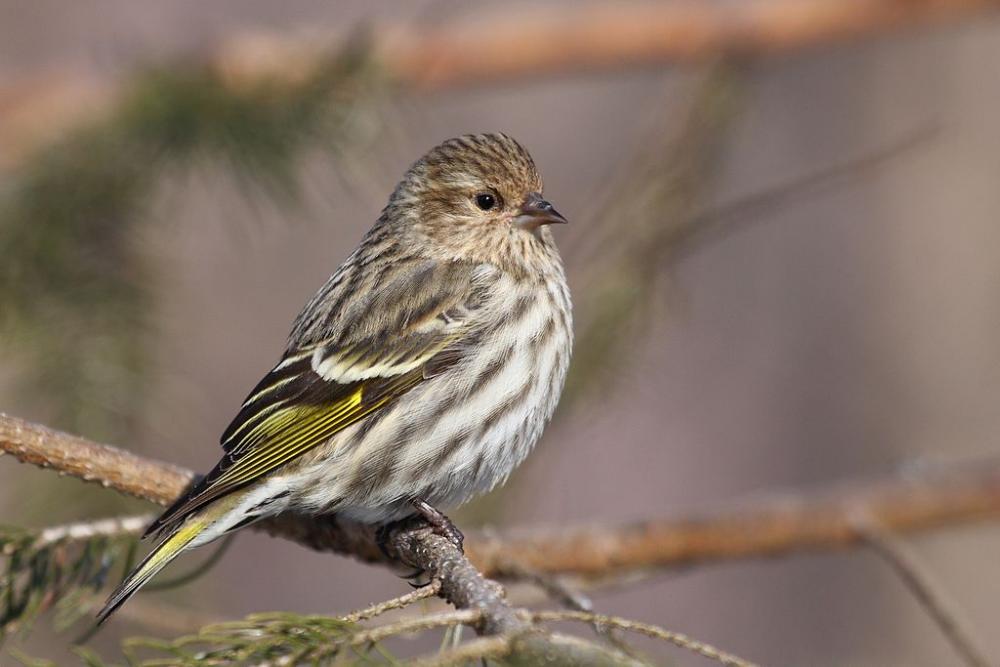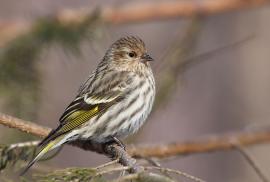Guide to Boreal Birds
Overview
Siskins, redpolls, and goldfinches are a closely related group of seed specialists. All have short, conical beaks; short, slightly forked tails; bright wing markings; and "nervous" behavior. They feed in flocks, which, after breeding, may contain hundreds of birds. They are all acrobats, often hanging upside down, like titmice and chickadees, plucking seeds from hanging seedpods and cones. The Pine Siskin's winter visits to the United States occur mainly in years when the seed crop has failed in the boreal forests. In some years large flocks may appear as far south as Florida. Their principal foods are the seeds of hemlocks, alders, birches, and cedars. Like most northern finches, they are also fond of salt, and can be found along highways that have been salted to melt snow.
Description
4 1/2-5" (11-13 cm). A dark, streaked finch with notched tail and small patches of yellow in wings and tail. Usually seen in flocks, which have a distinctive flight pattern: the birds alternately bunch up and then disperse in undulating flight.
Voice
Distinctive rising, bzzzzzt. Song like a hoarse goldfinch.
Nesting
3 or 4 pale green eggs, lightly speckled with dark brown and black, in a shallow saucer of bark, twigs, and moss lined with plant down and feathers and placed in a conifer.
Habitat
Coniferous and mixed woodlands, alder thickets, and brushy pastures.
Range/Migration
Breeds from southern Alaska, Mackenzie, Quebec, and Newfoundland south to California, Arizona, New Mexico, Texas, Great Lakes region, and northern New England. In winter wanders southward throughout United States.



